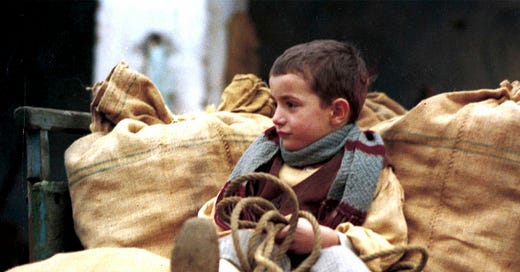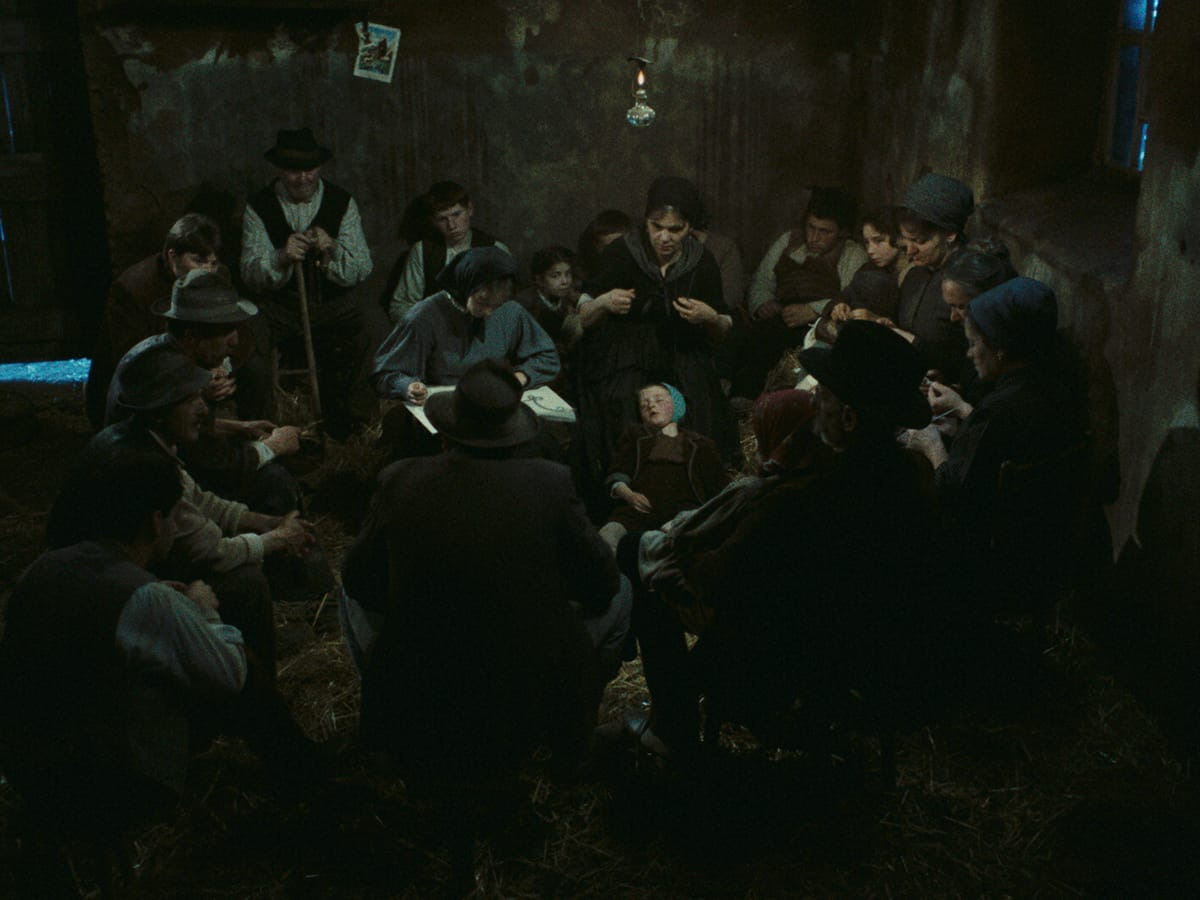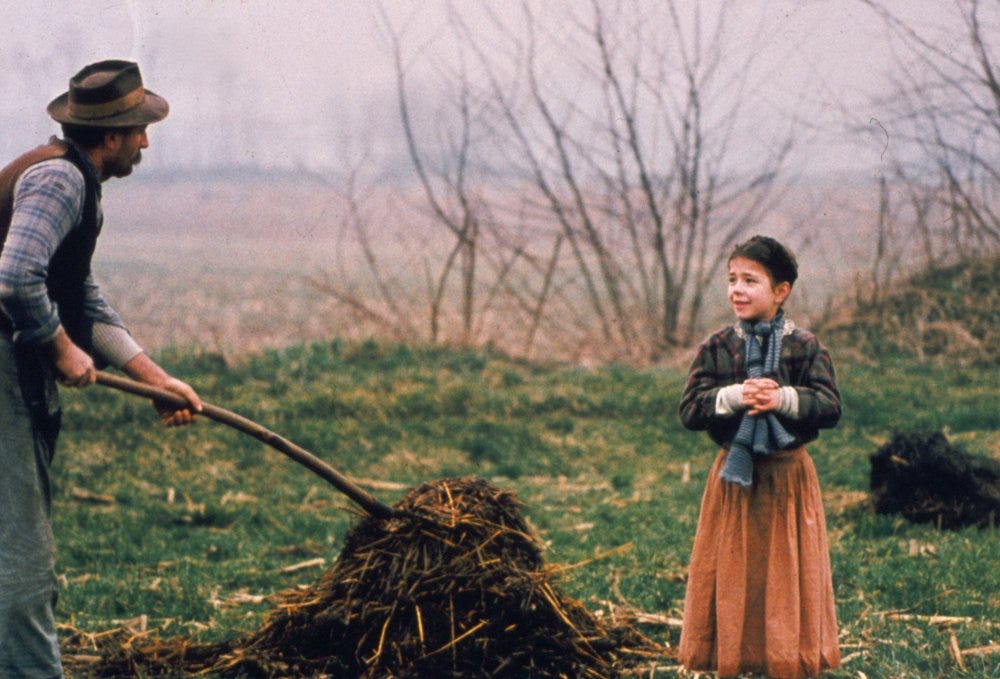For more details on the project, go here.
Still interested? Let’s start by tossing out a few “Honorable Mentions.” This year’s list of mentions isn’t a long one (compared to most subsequent years), because it wasn’t a particularly good year, by my “favorite” metric. But at the same time, as I look over the list, I realize that the three films I loved from 1978 pretty much capture my own peculiar “cinephilic” duality: obscure(ish), depressing, slow-moving foreign films and cheery, Disney-esque capers. Oh, and whatever Ralph Bakshi’s doing.
Honorable Mention (HM) #1: Hot Lead and Cold Feet
I’ve always loved Don Knotts. Not because of his (most famous) role as Barney Fife from “The Andy Griffith Show,” though, but as a direct result of some of my earliest cinematic experiences, which involved astonishingly-frequent viewings of The Apple Dumpling Gang and The Apple Dumpling Gang Rides Again. Disney’s live-action films from that general era were major influences on my cinematic (and actual) adolescence, and even on my own (goofy, especially in my early years) sense of humor. I don’t think it’s a good film, “objectively-speaking.” But when I scanned the list of films from this year, it tugged at my heart-strings. There’s a gentleness and innocence (and silliness) to that time in Disney’s live-action history that has been lost, and that I very much doubt will ever be found again. Oh, and here’s an “Honorable Mention for the Honorable Mention:” Jim Dale, probably most famous for his spectacular (and Grammy-winning) efforts on behalf of the audio book versions of the “Harry Potter” series, is wonderful in this film. He plays three different characters—Eli, Jasper, and Wild Billy Bloodshy—and while none of them are quite as memorable as Pete’s Dragon Dr. Terminus), the memory of his performance(s) still bring(s) a smile to my face.
HM #2: Ralph Bakshi’s Lord of the Rings
Now is probably a good time to mention that these “Honorable Mentions” are not always meant as endorsements. Sometimes, I’m just acknowledging that they’re worthy of mention, or that they impacted me significantly. Such is the case with Bakshi’s film, which is a very strange mixture of things; not all of them good. On the one hand, it played a significant part in the development of my long-standing position that animated films are “not just for kids” (Good). But it’s also a big factor in my equally long-standing hatred of rotoscoping (Bad). As Peter Jackson later discovered, making a film adaptation of a story so beloved by so many is a tall task, even if you get everything right (which is impossible). Bakshi, on the other hand, was a very long ways from getting everything right. Boromir as Bearded Viking Lord? Good. Legolas as Weird Blonde? Bad. And whatever was up with the hobbits? Just plain, ol’ Ugly. (Speaking of “ugly,” don’t even get me started on pseudo-solarization.) The reviews from film critics and from fans alike were so mixed, it’s no wonder they got no further than Helms Deep. Once again, though, there’s an “Honorable Mention for the Honorable Mention:” Leonard Rosenman’s score is a harbinger of Shore’s future masterpiece, even if it’s not quite up to the task. I’m especially intrigued/amused by how much the theme sounds like something from a WWII military ensemble film.
And now, on to the main event.
1978’s Selection: The Tree of Wooden Clogs, by Ermanno Olmi
If I’d been alive in 1948, then picking a “favorite” film for that year’s FFFEYIBA Project would have been easy: Vittorio De Sica’s Bicycle Thieves, which is one of the most relentlessly moving films about fatherhood (and the unique sufferings and joys that accompany it) ever made. Since I was -30 at the time, though, I’m going to do the next-best thing and go with Olmi’s film here, which is a clear spiritual and artistic descendent of De Sica’s neorealist masterpiece. Like Thieves, it features non-actors turning in extraordinary performances (including speaking in their archaic, Bergamasque dialect), a focus on the overwhelming challenges facing Italy’s working poor, and a simultaneous gentleness towards the film’s subjects and an insistence that the film’s viewers gaze unflinchingly upon their suffering.
Oh, and like Thieves, it was selected for the “Values” section of the Vatican’s Great Films list, put out in honor of the 100th Anniversary of Cinema.
A painterly and sensual immersion in late nineteenth-century Italian farm life, Ermanno Olmi’s The Tree of Wooden Clogs lovingly focuses on four families working for one landowner on an isolated estate in the province of Bergamo. Filming on an abandoned farm for four months, Olmi adapted neorealist techniques to tell his story, enlisting local people to live as their own ancestors had, speaking in their native dialect on locations with which they were intimately familiar. Through the cycle of seasons, of backbreaking labor, love and marriage, birth and death, faith and superstition, Olmi naturalistically evokes an existence very close to nature, celebrating its beauty, humor, and simplicity but also acknowledging the feudal cruelty that governs it. Winner of the Palme d’Or at Cannes in 1978, The Tree of Wooden Clogs is intimate in scale but epic in scope—a towering, heart-stirring work of humanist filmmaking.
Unlike De Sica’s legendary post-WWII film, Olmi’s Palme d'Or-winning work is not set in modern-day Italy; his is a period piece, telling the story of tenant farmers from the late 19th century. But he clearly believes that the lessons of the past are just as relevant to the present, and the way in which it feels like the next chapter in the revered tome of Italian NeoRealism is remarkable, especially given that it was made over three decades later. Minec, the little boy whose challenges (and need for shoes) feel like the film’s true heart (despite the sprawling ensemble of non-professionals), is a mirror of De Sica’s Bruno, except without the moment of insight that makes Thieves such a masterpiece. Instead, Minec is uncomprehending in his suffering, which makes the film a more bitter pill to swallow, in nearly every way.
I don’t know that Olmi every claims that he’s making a direct homage to Thieves, but the visual parallels between Bruno and Minec staggered me, the first time I watched. It’s also a bit more “slice-of-sorrowful life” than De Sica, who maintains a stronger story sense, even in the midst of the documentary-ish approach the two films share. Plus, it’s quite a bit longer, much more deliberately paced, and features many more characters—all of which add up to make it a bit less effective, in my book. (Oh, and an aside, but what is it with poor children and shoes? Gosh.)
Both films remind us that the political is (and has always been) personal. They remind us of the importance of taking note of those who live less fortunate lives, and of the suffering (and the sometimes accidental, often casual callousness) that so frequently accompanies such variances of fortune and of class. They encourage us to see the beauty in the ordinary and in the difficult. Most of all, they remind us of the often overlooked power and fruitfulness of family, and of the love and the hope that can only be conceived and nourished in its warm embrace.
I first saw this film on VHS, thanks to the encouragement/insistence of Dr. Stan Grove. The transfer was terrible, especially since much of the film looks like it was shot using available lighting. Thankfully, The Criterion Collection—the crew responsible for the above summary (and for the pitch-perfect description of the film as a “painterly and sensual immersion”)—released a 4K restoration just under eight years ago (Spine #854). Created “in collaboration with The Film Foundation at L’Immagine Ritrovata and supervised by director Ermanno Olmi,” it is a stunning improvement on the dark graininess of my first viewing, and is accompanied by the usual (excellent) essays the Collection provides with each release. Luminous.
Over at the Trailers From Hell website, Glenn Erickson notes that “The Tree of Wooden Clogs is an unusual Italian film in that its audio was recorded directly instead of being post-dubbed. Director Olmi also makes creative use of off-camera sound. Every communal effort from harvesting to spinning thread to shucking corn seems to come with its own song.” …which reminds me to mention that the music in the film is amazing. Almost entirely Bach, and almost entirely organ, performed by Italian organist, Fernando Germani. Perhaps the most powerful part of a powerful film.








